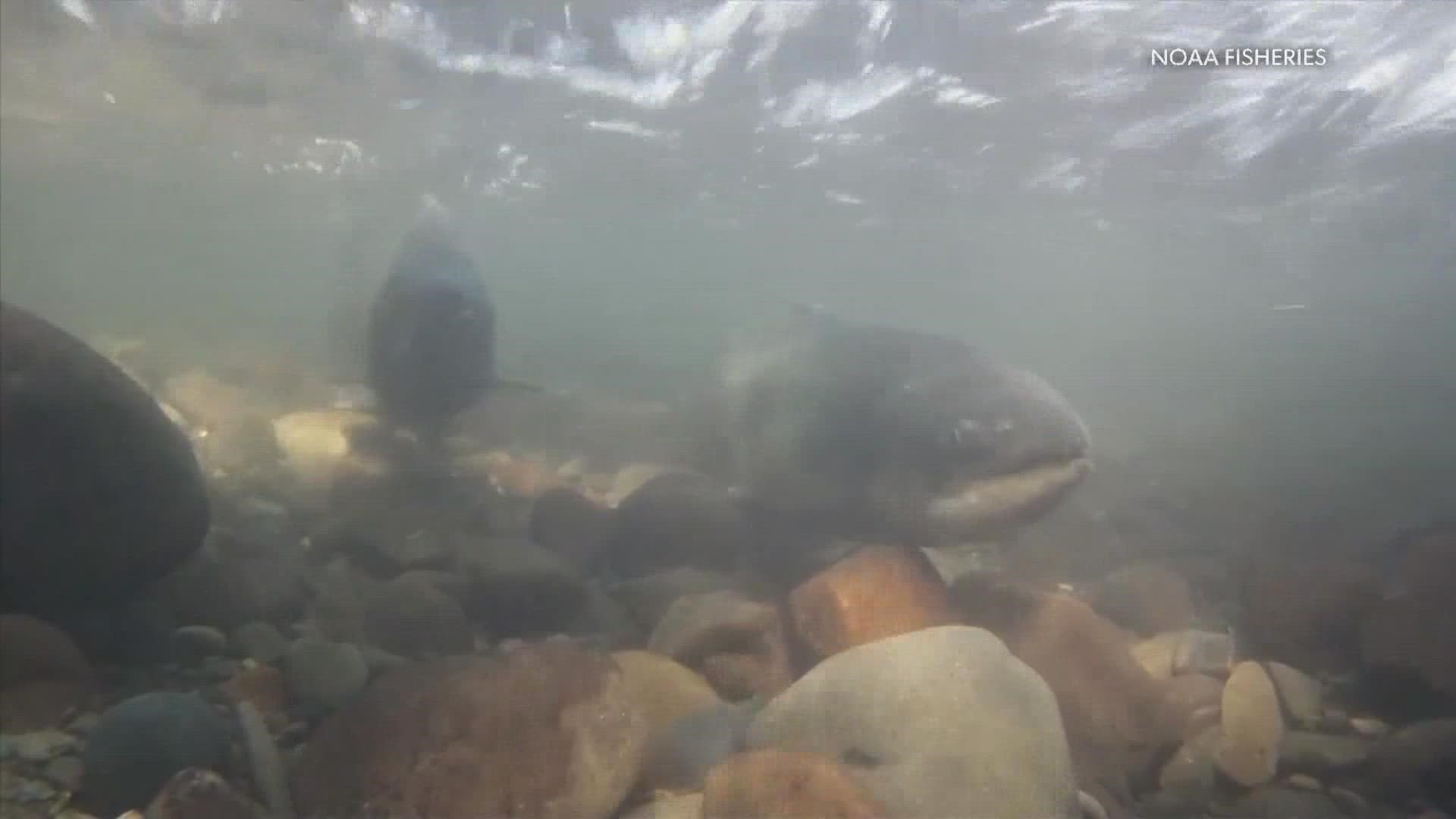SEATTLE — Breaching the four lower Snake River dams is one of the “essential” steps needed to rebuild the salmon and steelhead populations in the Columbia Basin to “healthy and harvestable levels,” according to a report finalized by the National Oceanic and Atmospheric Administration (NOAA).
The report, published Sept. 30, followed a draft released in July and includes feedback from state and tribal fishery co-managers. The finalized report identified a “comprehensive suite of actions” that have the greatest chance of restoring salmon and steelhead stock in the Columbia Basin.
NOAA Fisheries believes the actions in the report are necessary to achieve Columbia Basin Partnership’s mid-range goals for “adult salmon and steelhead abundance by 2050.”
The recommended actions in the report include “increasing habitat restoration, reintroducing salmon into blocked areas, breaching dams, managing predators, reforming fish hatcheries and harvest and reconnecting floodplain habitat.”
According to the report, it is “essential that we implement all these actions” and that they are done “at a large scale.”
“This is a crucial time for the Columbia Basin’s salmon and steelhead," said Janet Coit, assistant administrator for NOAA Fisheries and acting assistant secretary of commerce for oceans and atmosphere at NOAA. "They face increasing pressure from climate change and other longstanding stressors including water quality and fish blockages caused by dams."
According to the report, breaching the dams would decrease the travel time for water and juvenile fish, while also “reducing stress on juvenile fish associated with their hydrosystem experience that may contribute to delayed mortality after reaching the ocean.” Breaching the dams would also add additional rearing and spawning habitat for the Snake River stocks.
The report also calls for reintroducing fish into blocked areas and establishing adult and juvenile passage on the upper Columbia River blocked by the high-head dams as one of the centerpiece actions. Reintroducing the salmon would provide more spawning and nursing areas, while also indirectly benefitting other species through ecosystem impacts.
In addition to improved passage through the lower dams, the report said it is also important for mid-Columbia River stocks to “improve water quality and quantity and passage survival in focused areas of low- to mid-elevation tributary habitats.”
The report stated the recommended actions “need to be implemented as soon as possible,” but actions that provide “tangible benefits shortly after implementation” are some of the most urgent.
RELATED: Inslee, Murray recommends taking action to make breaching Snake River dams a 'viable option'
Washington Gov. Jay Inslee and U.S. Senator Patty Murray released a final report in August stating the benefits provided by the four giant hydroelectric dams on the Snake River must be replaced before the dams can be breached to save endangered salmon runs.
That is especially true regarding the reliable and carbon-free electricity the dams generate, the report concluded.
However, the issue is not a matter of electricity versus salmon, the report from Inslee and Murray said.
“We believe that is an oversimplified binary choice, and it is one that we do not accept or see as inevitable,” Inslee and Murray wrote.
But, “the science is clear that – specific to the Lower Snake River – breach of the dams would provide the greatest benefit to the salmon,” the report from August said.
Major benefits of the dams besides electricity include making the Snake River navigable up to Lewiston, Idaho, and allowing barges to carry wheat and other crops to ocean ports. Eliminating the dams would require truck and rail transportation improvements to move crops, the report said. The dams also provide irrigation water for farmers and recreation opportunities for people.
A draft report released on June 9 concluded the benefits provided by the dams would cost between $10.3 billion and $27.2 billion to replace.
If the four Snake River dams were ultimately removed, it would be the largest such project in U.S. history. In 2012 the Elwha Dam on Washington state’s Olympic Peninsula was removed to restore habitat. At the time, the National Park Service said the elimination of the Elwha Dam was the largest such project in U.S. history.
Congress will ultimately decide if the federally-owned dams will be removed, and would have to appropriate money for the work.
The U.S. government has spent more than $17 billion trying to recover Snake River salmon, through improvements to fish ladders and other measures, with little to show for it. In 2017, the number of Chinook salmon returning to the Snake River dropped below 10,000.

